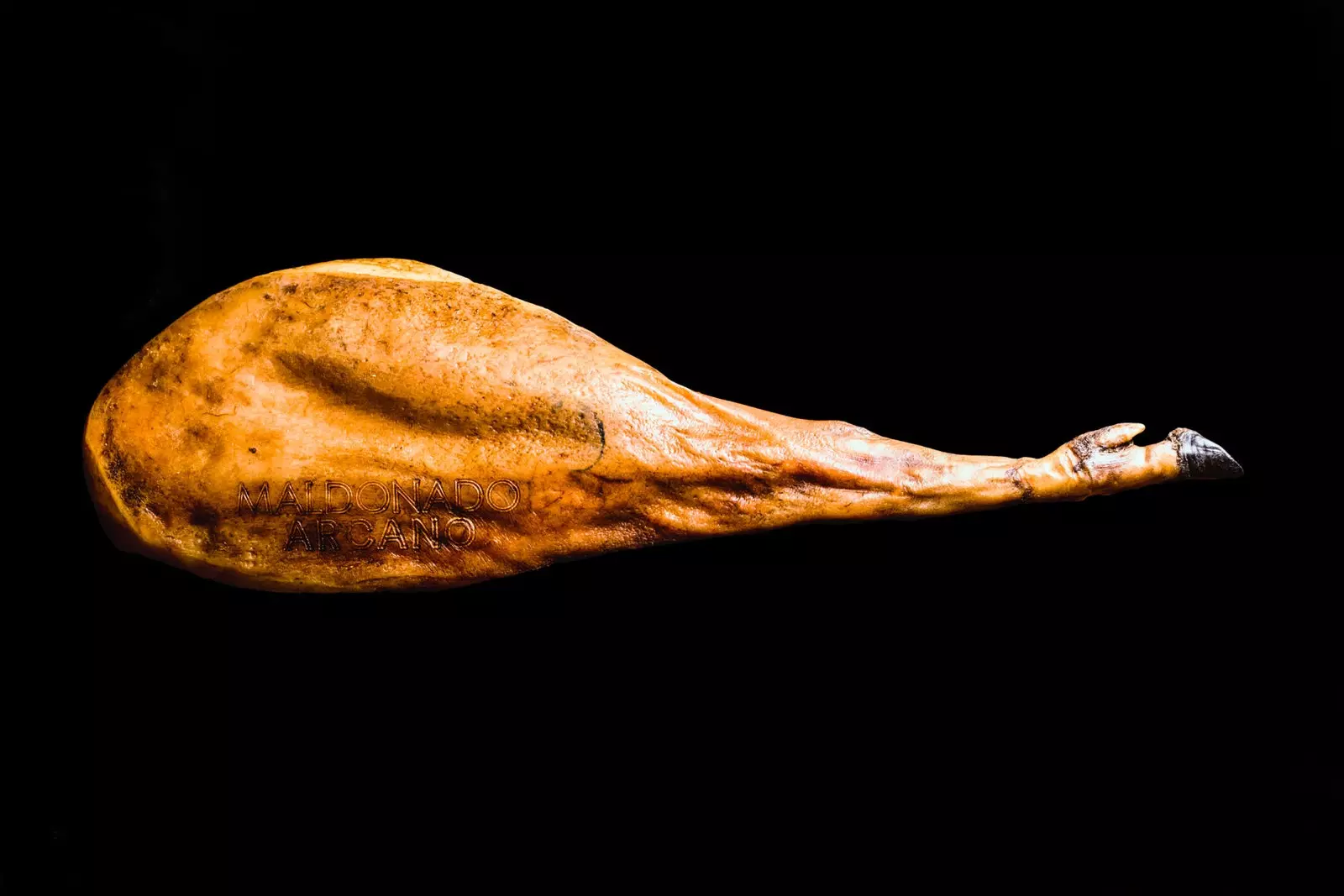
100% Iberian pig. And period!
Not all the land is dehesa, nor is all the pig Iberian. A priori, we have it clear. But, in the end, we end up biting many more times than we think and when we want to buy a 100% Iberian ham, sausage or pork, it is not or we have paid for it as if it were. That is not bad, but it could be better and, above all, we want you to put exactly what you are looking for on your table this Christmas.
We look for answers to all our questions and doubts to pay for what you want, because there is no way to fill the tables with good sausages and ham. The star appetizer, if you hurry, the main course.
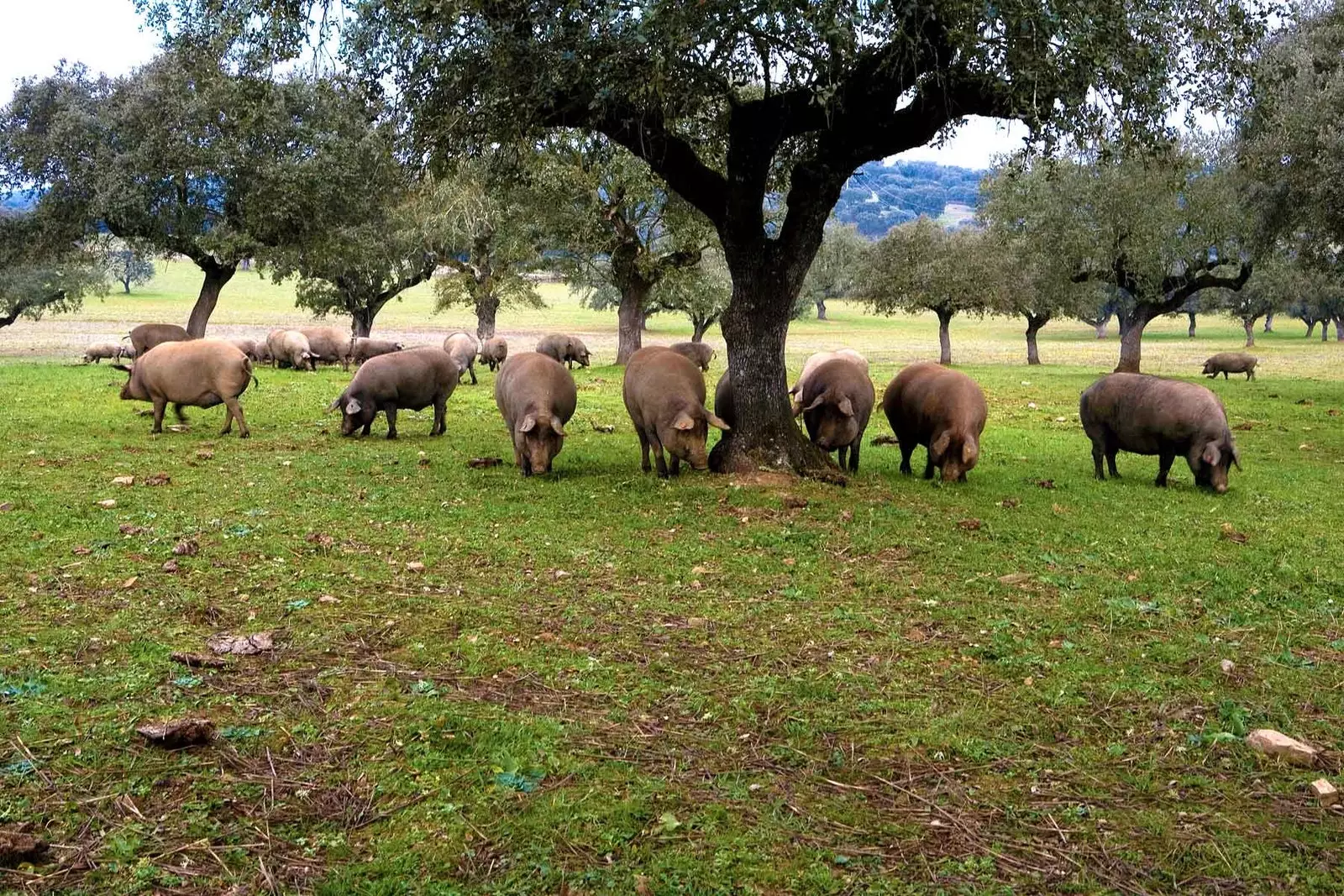
By their black skin you will recognize them, but there is more.
WHAT DO WE TALK ABOUT WHEN WE TALK ABOUT IBERIAN PIG?
“An Iberian pig is a specific breed, which, like all animals, adapts to the environment and in this specific case its evolution has led it to adapt to a specific climate and space: the dehesa, which forms part of the southwest of the Iberian Peninsula", explains Manuel Maldonado, while he walks through his meadow in Extremadura, where since 1962, first his father and now him, they raise the most genetically pure Iberian specimens.
Thanks to its evolution, its adaptation, the Iberian pig is capable of accumulating large amounts of fat during a certain time of the year, in autumn and winter. The moment in which the dehesa has an abundance of herbs and acorns from the enzymes and the cork oaks. It accumulates fat for when the dehesa dries up and there is not so much food left during the spring and summer. “If it survives one summer, it is proof that they are 100% Iberian,” he says.
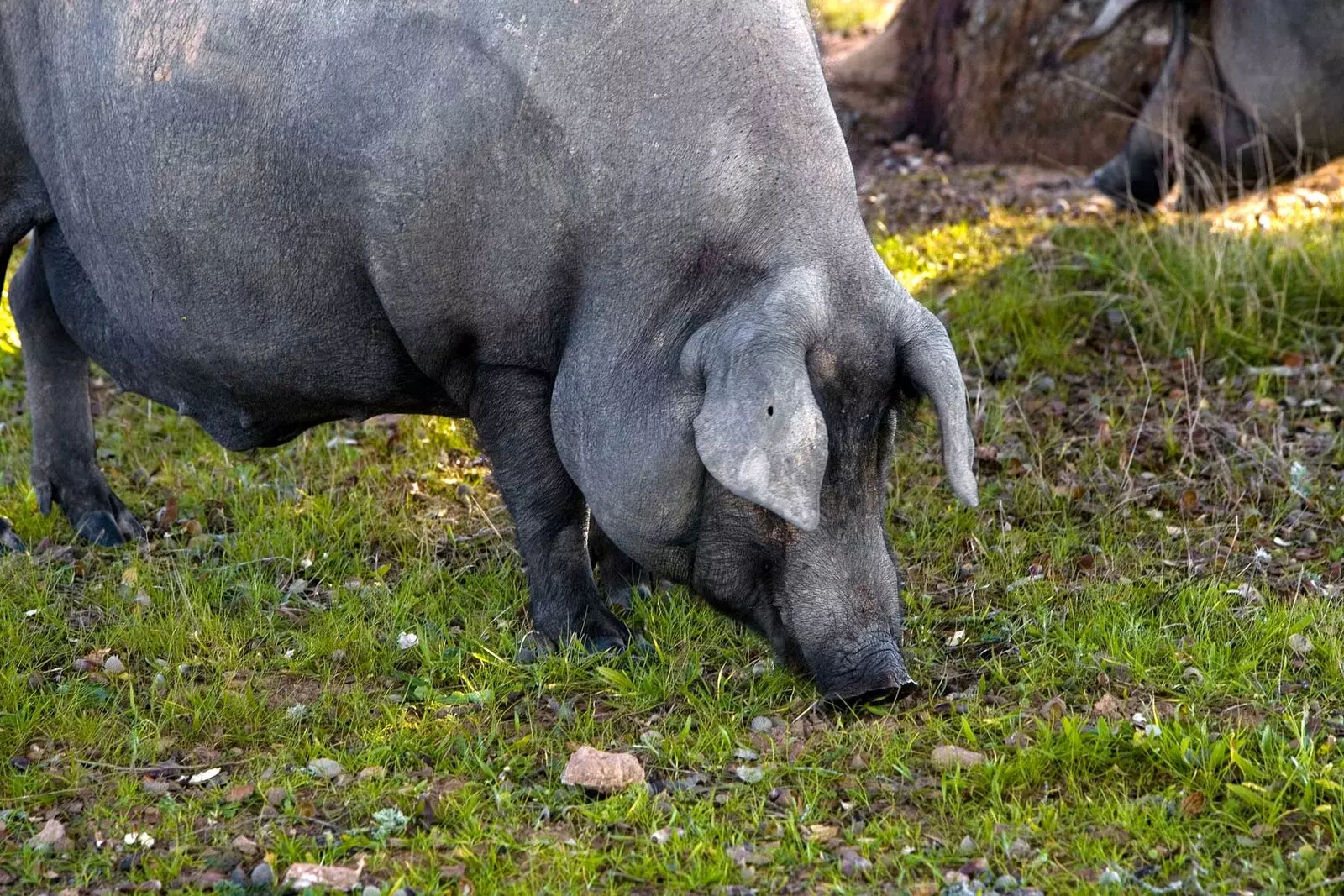
The pig takes care of the meadow and vice versa.
WHAT IS THE MOUNTAIN?
This time of fattening is called montanera. Iberian pigs usually enter the montanera “with 80 or 90 kilos”, says Maldonado. "And at the end of the season they have added 50 or 60 kilos more." Kilos that they take from acorns and herbs, food that they have searched for while they walked freely through that habitat that runs through their genes.
"Food, the environment are fundamental, but in the case of the Iberian pig, genetics is the key," he adds. “Because if we put another breed of pig in the same environment and the same circumstances, the result will be very different. It is the only one that can survive in this environment without the help of man”.
And that environment subsists thanks to the Iberian pig as well. “That the animal benefits from the environment and the animal benefits the environment”, Maldonado explains. "It is very important that the feeding of the pigs is natural, it is fertilizer for the earth." That gives it an ecological character.
The montanera varies according to the climate of the year, according to the rains. That's why Iberian pigs can complete up to two or three montaneras so that they reach their ideal and always natural weight.
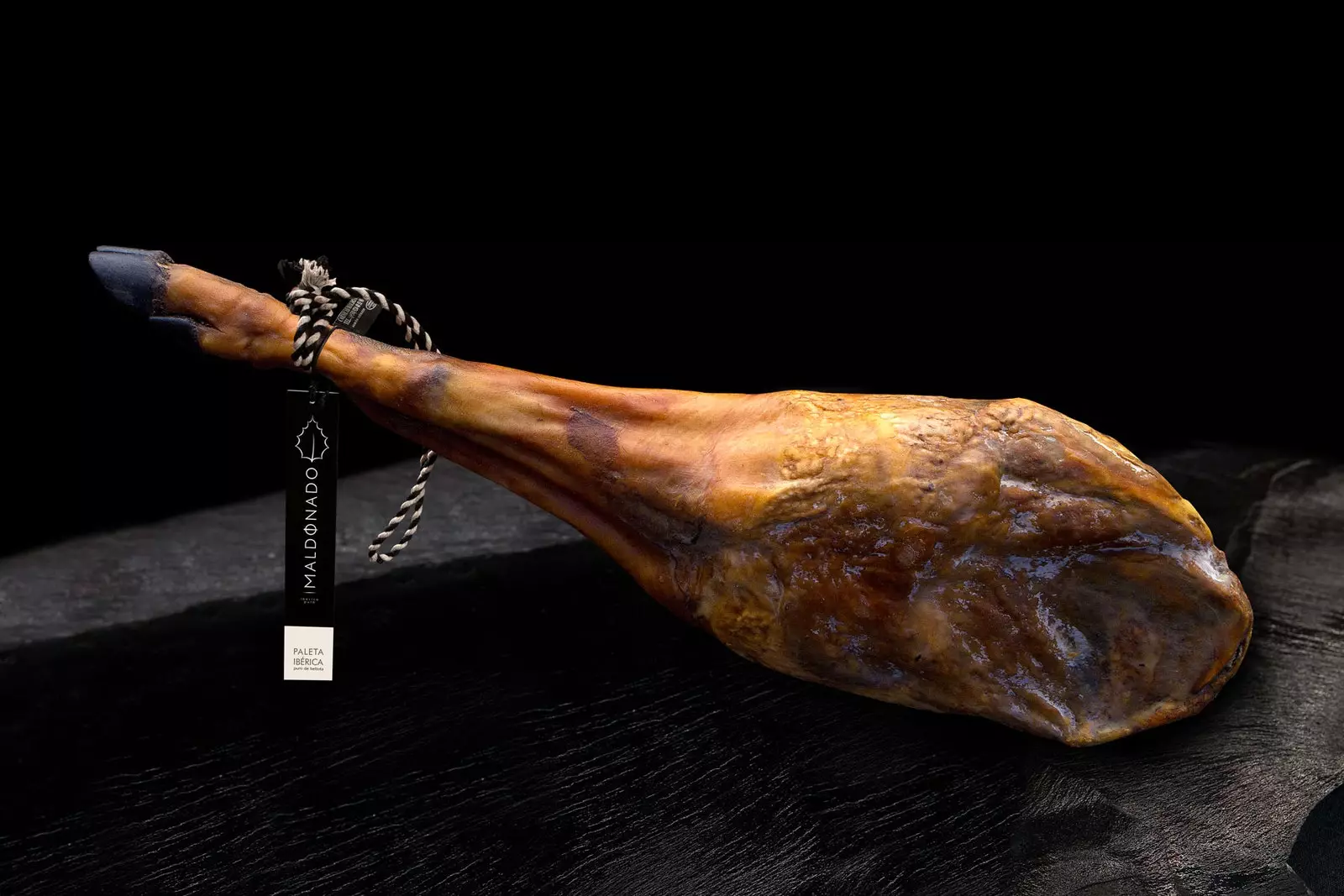
Leg and black label.
GENETICS?
The breeding and production of the Iberian pig is highly regulated, although there are also many traps to increase the production of such a precious delicacy inside and outside of Spain. And, in the end, he The definitive proof of the Iberian pig is given by the genetic study in which brands such as Ibéricos Maldonado invest and put a lot of interest. For example, each piece of Albarragena ham that they sell has a purity certification carried out by the Department of Molecular Genetics of the University of Córdoba.
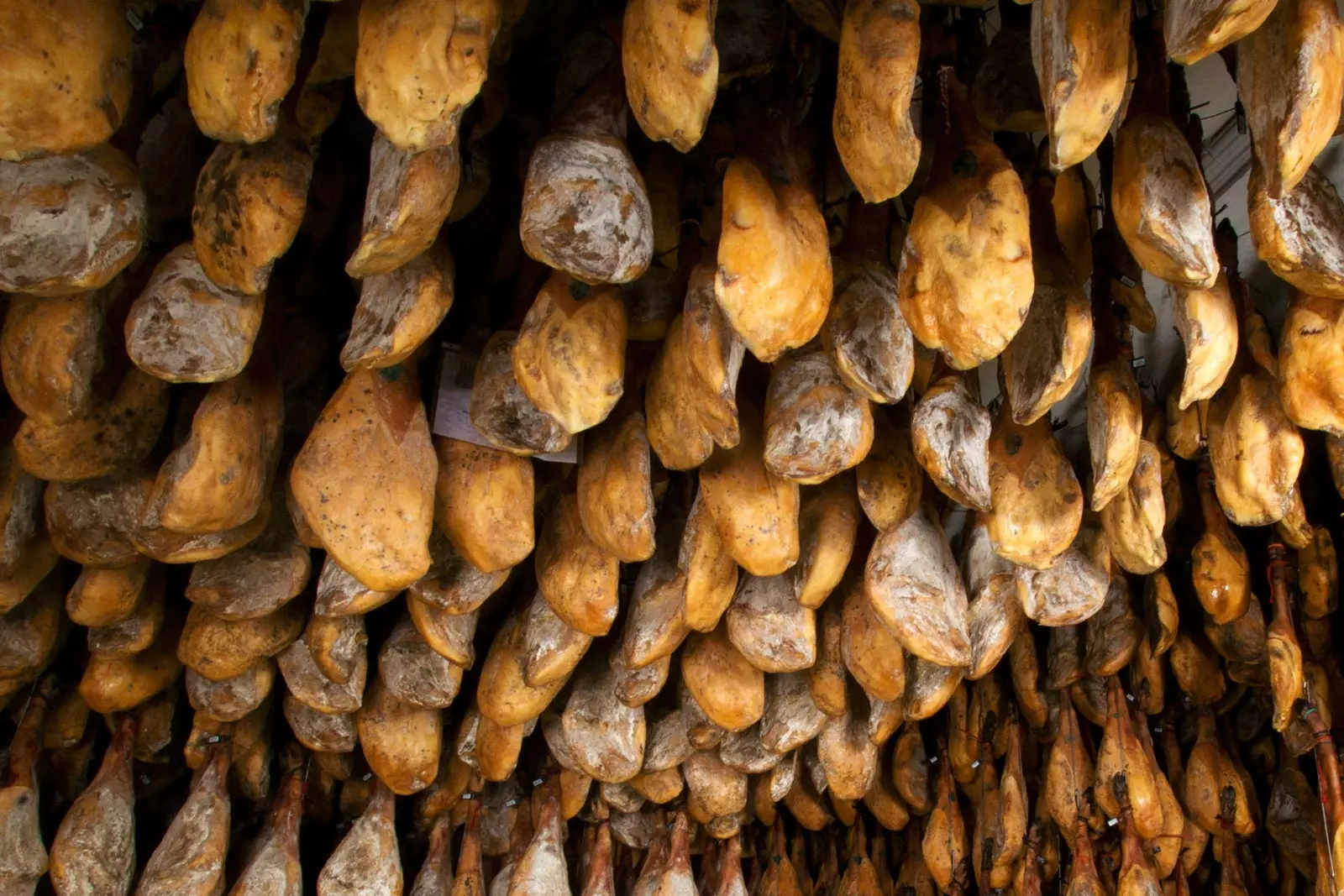
Secadero, in curing there is also a lot of craftsmanship.
AND THOSE LABELS?
And, in the end, when you already know everything you wanted to know about these animals, when you have doubts, you can resort to the label: Black is 100% Iberian acorn-fed (Iberian pigs 100% raised in the pastures in freedom, fed on acorns and what they found along the way) ; red is acorn-fed Iberian (they are 75 or 50% Iberian, crossed with Duroc pigs, also raised in freedom) ; green is Iberian field bait (they can be 100%, 75% or 50% Iberian, the difference is that their food is from natural pastures and feed); white is Iberian cebo ham (They can also be of 100% Iberian breed or up to 50%, but they have only been fed with feed in stables or feedlots).
THE MORE FAT, THE BETTER?
Definitely yes. It's the definitive test, when you open a ham and half of it is fat. If the pig has been raised in the dehesa eating its acorns, the fat has been seeping into its skin, its muscle. "All that oil should stay inside the ham," says Maldonado. And it is achieved with artisan curing processes and care.
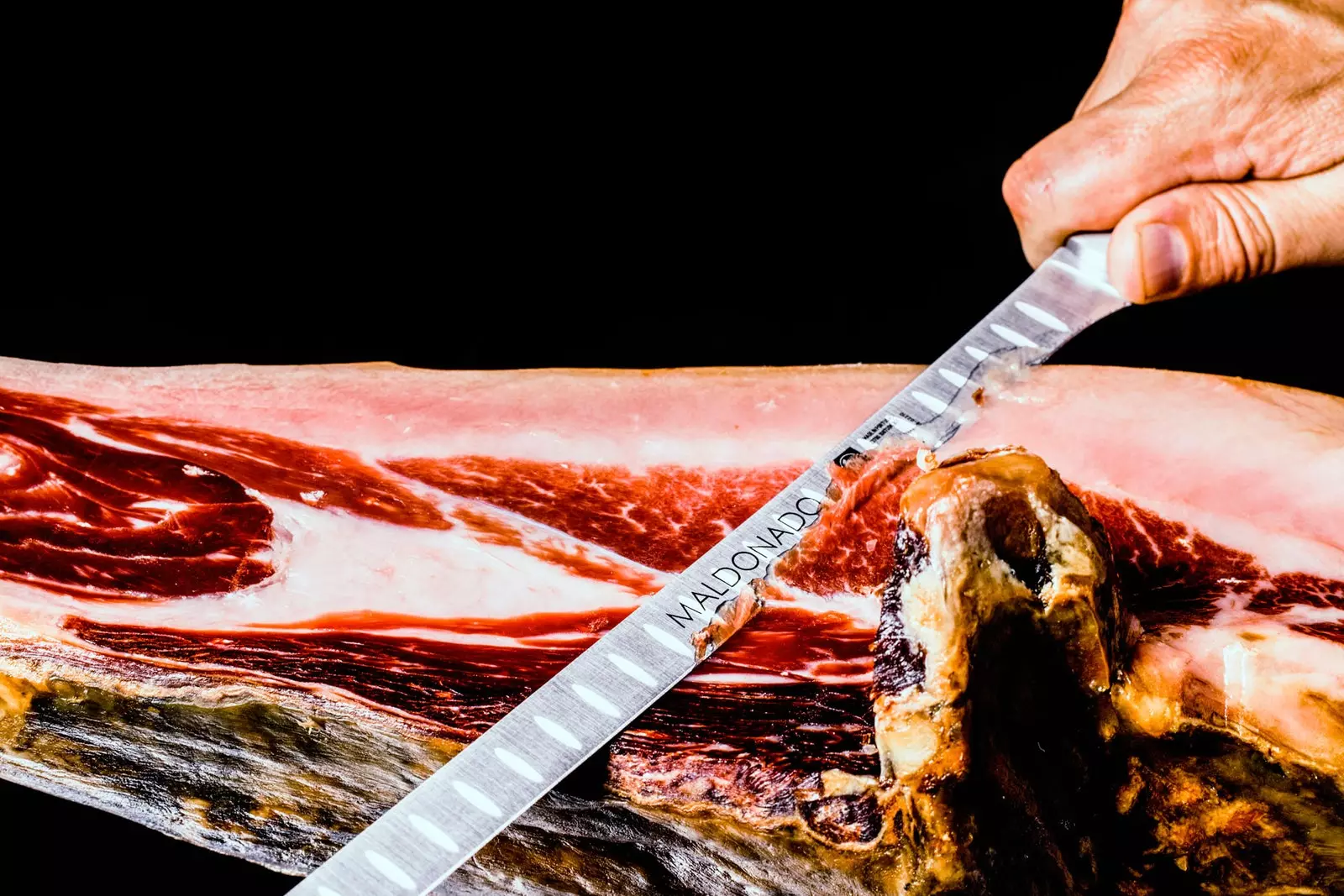
More fat, much better.
